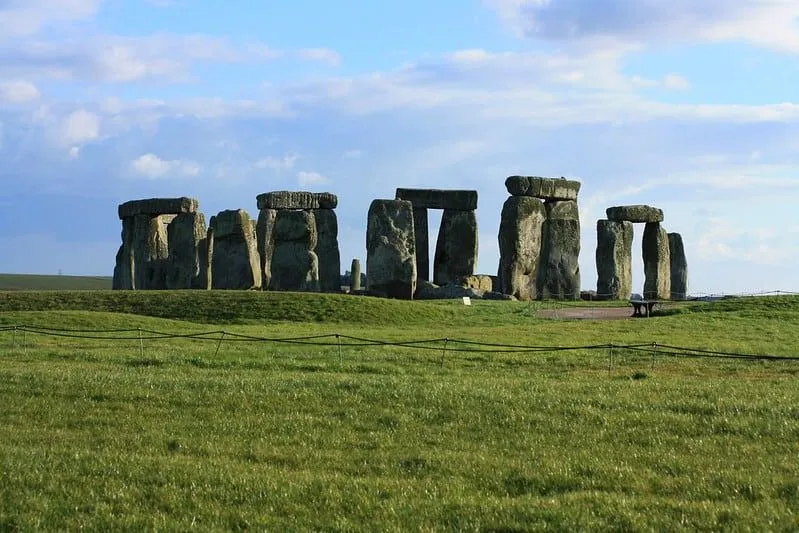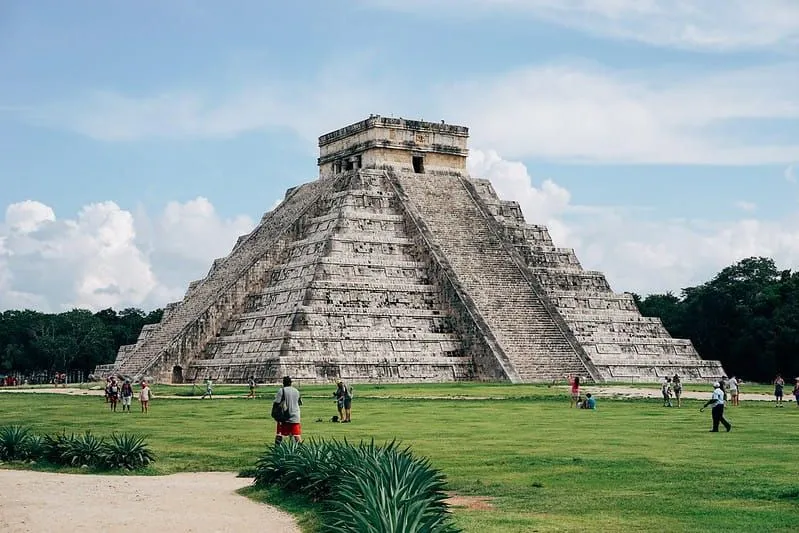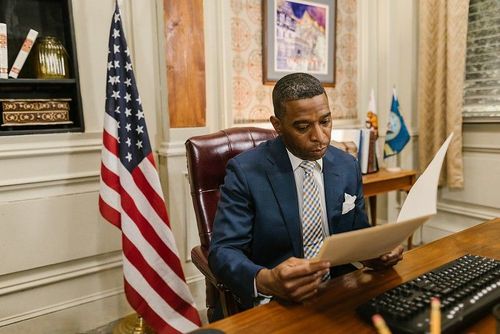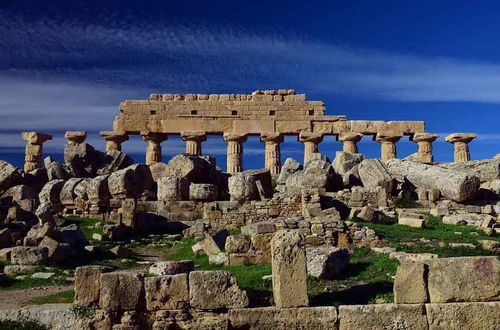FOR AGES 7 YEARS TO 11 YEARS
Image © Lucélia Ribeiro.
Teaching at home can sometimes be challenging without the right resources, we have gathered the information you need to teach primary school kids all about timelines.
With a subject like history, it can be very difficult to know where to start. We understand this, so we have outlined the content from ancient civilisations and world history to your local history with some suggestions about possible ways to teach.
Also, we have written a rough guide as to how teaching primary children information using a history timeline is usually done in primary schools. With our timeline history of Britain, you will be an expert in no time!
A timeline is used to visually demonstrate when events took place and how far apart in time they happened. They are usually labelled points on a horizontal line.
Various levels of detail can change the look and function of a timeline and it can represent any section of history. You could cover the entirety of history (an ambitious task!), or more specific developments through a particular time period.
For example, a timeline could be about one specific theme, such as how Roman armour changed over time. A British timeline of history would place aspects of British history in chronological order from the earliest event, artefact or person to the most recent example of these things. Finally, if you were trying to do a timeline of world history then a range of points could be plotted on the line to show how long ago different events were.
A history timeline can be very useful to visually represent segments of time. This can help children retain information about the past in chronological order and can help them order their own notes in an organised way.
When teaching world history, it is important to show kids how different events relate to each other. For example, you could draw a line with the creation of the pyramids at one end, the creation of the iPhone on the other end, then plot Cleopatra's birth on the line to show that she was actually born closer to the creation of the iPhone than the creation of the pyramids.
In Year 3 children are encouraged to think in then-and-now terms. They may be shown a picture of a Roman house, for example, then encouraged to talk about how their own house is different.
In Year 4 there is more emphasis placed on the children constructing timelines themselves and thinking about the chronological order of events. This can start with dairy entries from the point of view of someone who lived years ago in a specific period of history.
In Year 5 pupils will be able to talk about how far apart events in history were from each other and be able to construct a timeline of British history to visually represent this.
In Year 6 pupils should be able to sequence artefacts, compare features of different decades and write chronological diary entries confidently.
Children are encouraged to make their own history timelines wherever possible and utilise different sources and mediums to do so.
Below is an outline of the content you could include on a British history timeline to help with at-home teaching.
If you are looking for a starting point for teaching a British history timeline, then prehistoric Britain is the earliest British history outlined in the curriculum.
Stone age: 3000 BC is when the farmers arrived from Europe. Their life was very different from ours today.

Image © mitko_denev.
Bronze age: 2100 BC is when bronze was discovered and became the most useful metal used by people in Britain.
Iron age: 750 BC is when Iron replaced bronze as the most useful metal.
The KS2 curriculum states that children should learn some of the impact that the Roman Empire had on Britain. Plotting this on a timeline is a great way to do this!
Roughly 2000 years ago, Britain was ruled by the Celts. In AD 43 the Roman Army landed in Kent. They spent a year conquering further inland and built new forts, roads and settlements.
A history timeline about the Romans can include the following periods of history.
Anglo-Saxons: Spanning from AD 410 to AD 1066 The Anglo-Saxon age is an exciting topic to learn in primary school because of their rich culture of storytelling. When teaching the Anglo-Saxons a spooky, romantic or heroic story can really bring this period of time to life.
Vikings: From the year AD 700 to AD 1100, these fearsome warriors came to Britain on longboats. Learning about the Vikings will ignite your KS2 child's imagination!
World history is an important part of your child's primary education and can help give them an understanding of the world beyond Britain and British history.
Ancient civilisations are fascinating and your child's school can choose from a range of interesting civilisations such as:
The Ancient Sumer civilisation: 5000 BCE- 1750 BCE. Located in Mesopotamia, The Sumerians invented the wheel, irrigation and a complex language.
The Indus Valley: 3300 BCE - 1300 BCE. Located in South Asia, it is thought that this was the largest civilisation. They are thought to be a very peaceful people as hardly any weapons have been found by archaeologists.
Ancient Egypt: 3100 BCE- 30 BCE. The ancient Egyptians had a rich culture of clothing and religion which can be fascinating to all ages. Perhaps a virtual trip to The British Museum could help the whole family learn about the ancient Egyptians.

Image © William Ismael.
The Shang Dynasty of Ancient China: 1600 BC-1046 BC. This dynasty is very famous for its bronze and jade artefacts. A craft project could be a great way to learn about these artefacts and add them to one of the timelines you create!
Ancient Greece: 800 BC - 338 BC. Ancient Greeks are often famous for the Greek gods and their amazing architecture. Perhaps studying ancient Greece could feed nicely into a watching Hercules?
Primary school children will cover where and when these civilisations developed and the school can choose which they will provide in-depth teaching about.
Early Islamic civilisation: from CE 900. Learning about early Islamic Civilisation could be a good way to introduce diary entries from the point of view of one of Muhammad's early followers, or a timeline of his life.
The Mayan civilisation: AD 250 - 600. The Mayan Civilisation was located in South America and is known for its advanced language, astronomy, calendar, architecture and...maths! Learning about this incredible civilisation could show kids that maths can be cool.

Image © Filip Gielda.
Benin: AD 900-1300. Located in West Africa, this fascinating city regarded the king, known as Oba, very highly and exploring the stories around him could be a good opportunity for teaching children something new.
A fun activity to bring these to life would be plotting all of the history topics on one big history timeline, so that primary children can easily see where the British history that they have learnt lots about fits into the wider world.

Image © Stanley Zimney.
An exciting aspect of the curriculum which offers a great opportunity for a hands-on teaching is the local history section. To facilitate teaching, it can help to gather some information about local monuments or historical sights in the local area and maybe inspire a visit!
How this is taught in different primary schools across Britain will depend on the school and the local area's history. It is a fabulous opportunity to get the craft supplies out and make some models of local historical landmarks or artefacts.
You could make some local artefacts from different periods of time, then ask your child to arrange them in chronological order from oldest to most recent. This will help them interpret and organise the objects.
Read The Disclaimer
At Kidadl we pride ourselves on offering families original ideas to make the most of time spent together at home or out and about, wherever you are in the world. We strive to recommend the very best things that are suggested by our community and are things we would do ourselves - our aim is to be the trusted friend to parents.
We try our very best, but cannot guarantee perfection. We will always aim to give you accurate information at the date of publication - however, information does change, so it’s important you do your own research, double-check and make the decision that is right for your family.
Kidadl provides inspiration to entertain and educate your children. We recognise that not all activities and ideas are appropriate and suitable for all children and families or in all circumstances. Our recommended activities are based on age but these are a guide. We recommend that these ideas are used as inspiration, that ideas are undertaken with appropriate adult supervision, and that each adult uses their own discretion and knowledge of their children to consider the safety and suitability.
Kidadl cannot accept liability for the execution of these ideas, and parental supervision is advised at all times, as safety is paramount. Anyone using the information provided by Kidadl does so at their own risk and we can not accept liability if things go wrong.
Kidadl is independent and to make our service free to you the reader we are supported by advertising.
We hope you love our recommendations for products and services! What we suggest is selected independently by the Kidadl team. If you purchase using the buy now button we may earn a small commission. This does not influence our choices. Please note: prices are correct and items are available at the time the article was published.
Kidadl has a number of affiliate partners that we work with including Amazon. Please note that Kidadl is a participant in the Amazon Services LLC Associates Program, an affiliate advertising program designed to provide a means for sites to earn advertising fees by advertising and linking to amazon.
We also link to other websites, but are not responsible for their content.
Was this article helpful?



Browse Category



We’ll send you tons of inspiration to help you find a hidden gem in your local area or plan a big day out.



Check your inbox for your latest news from us. You have subscribed to:
Remember that you can always manage your preferences or unsubscribe through the link at the foot of each newsletter.